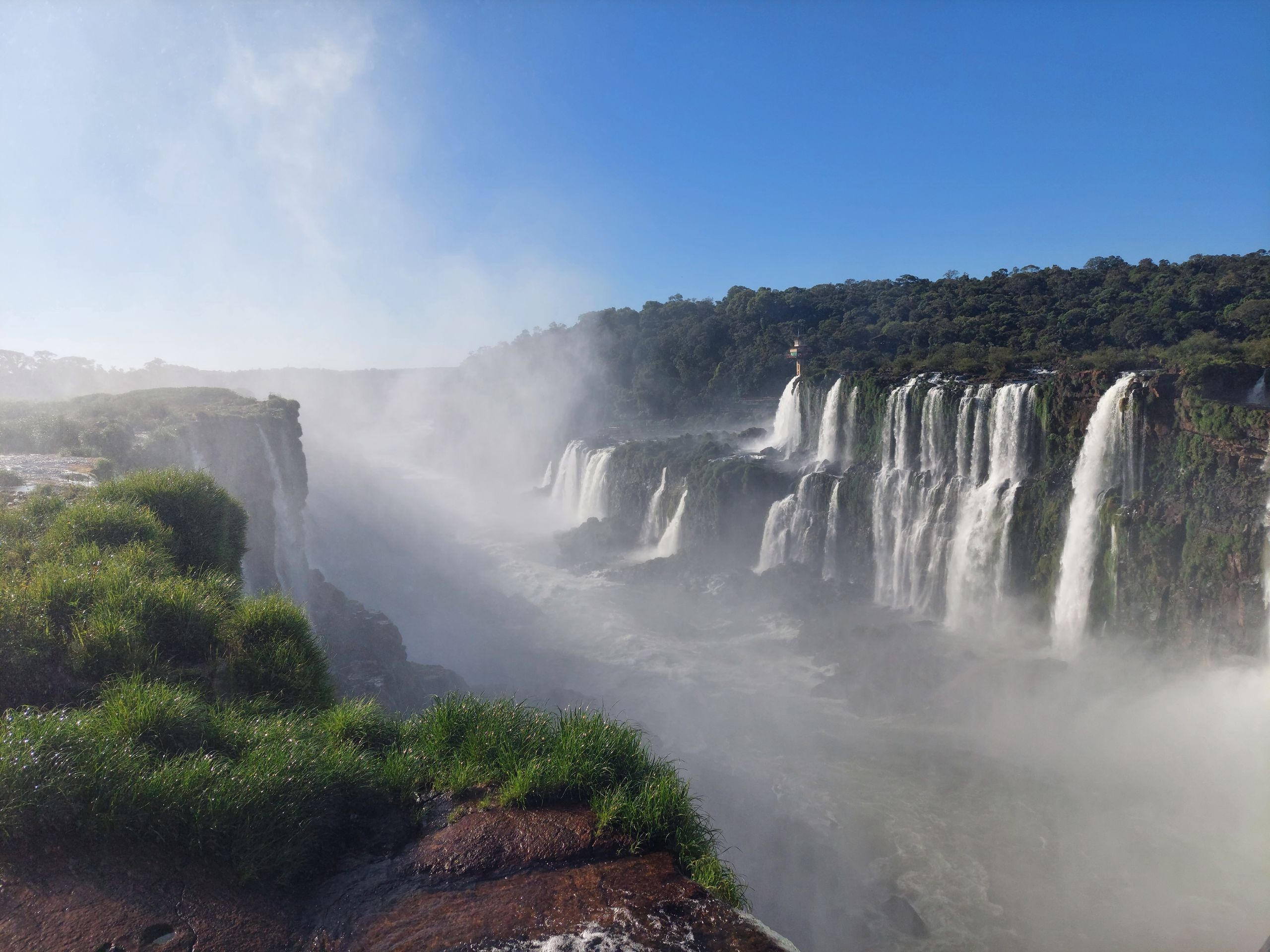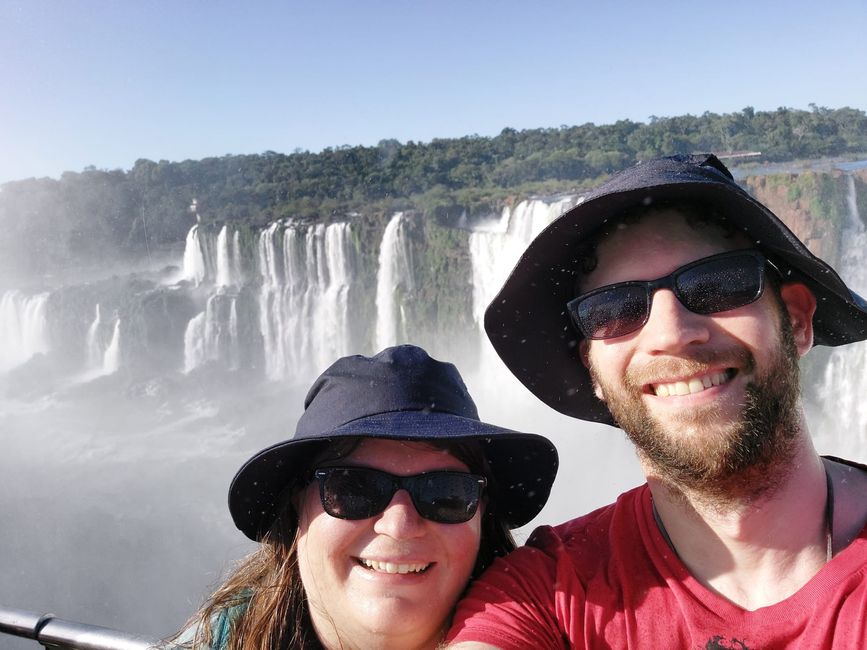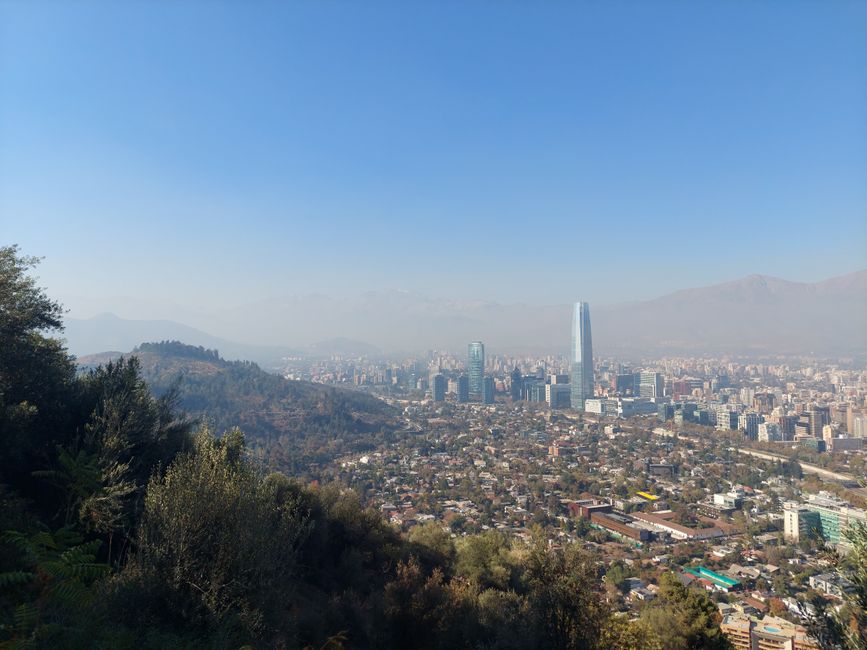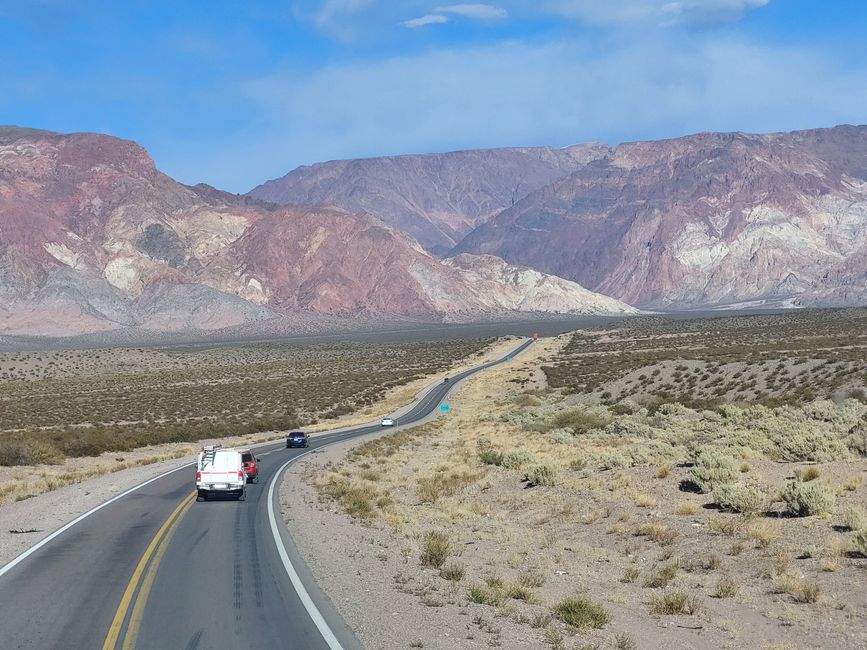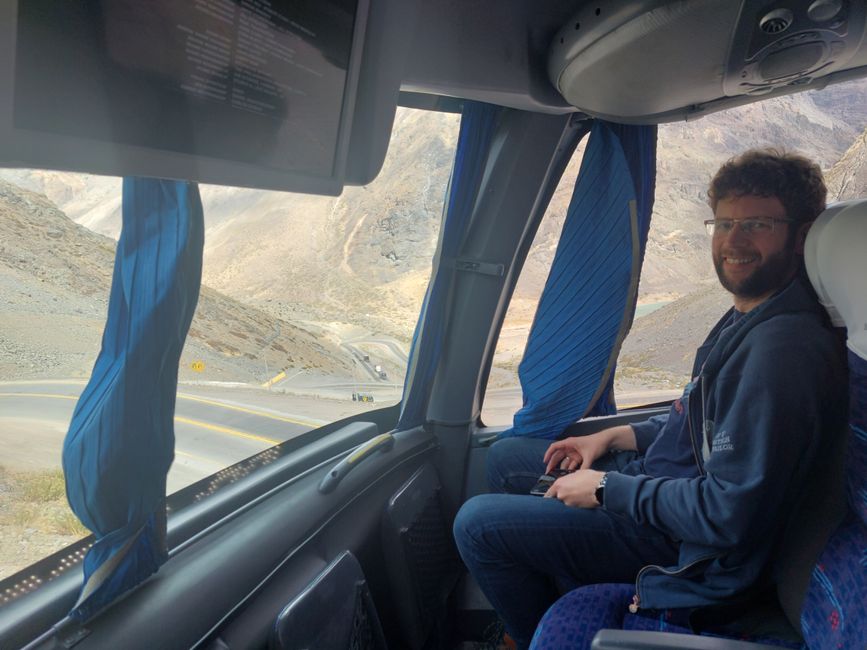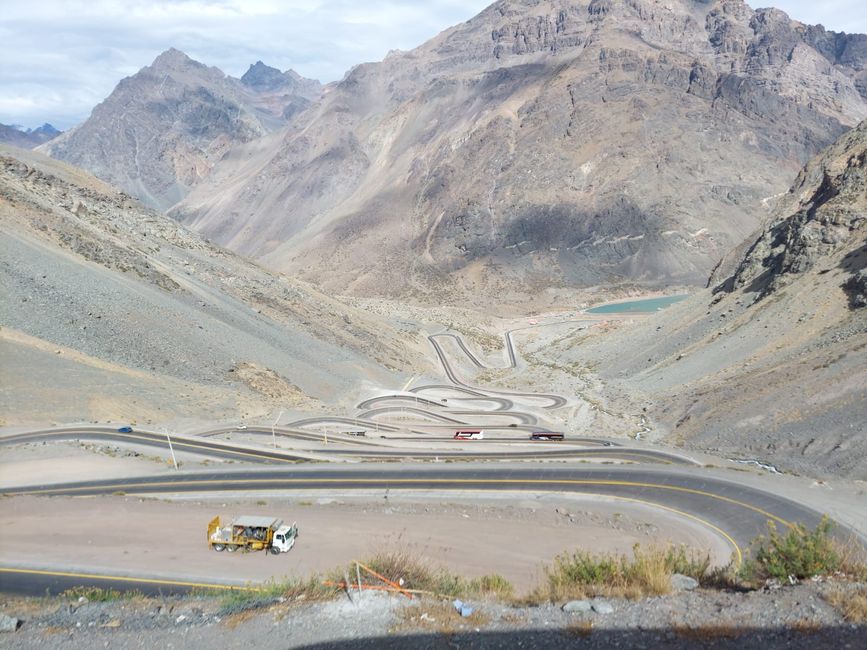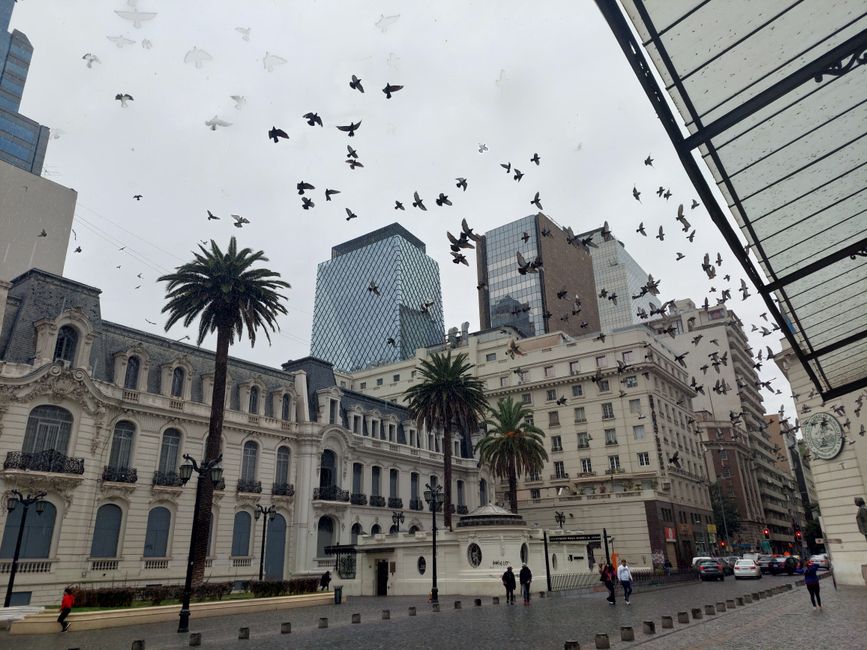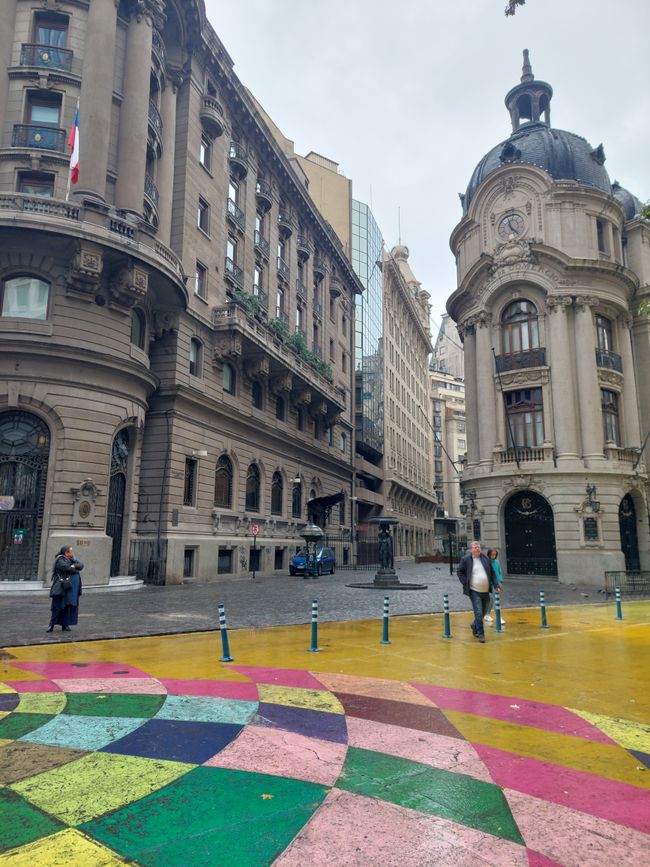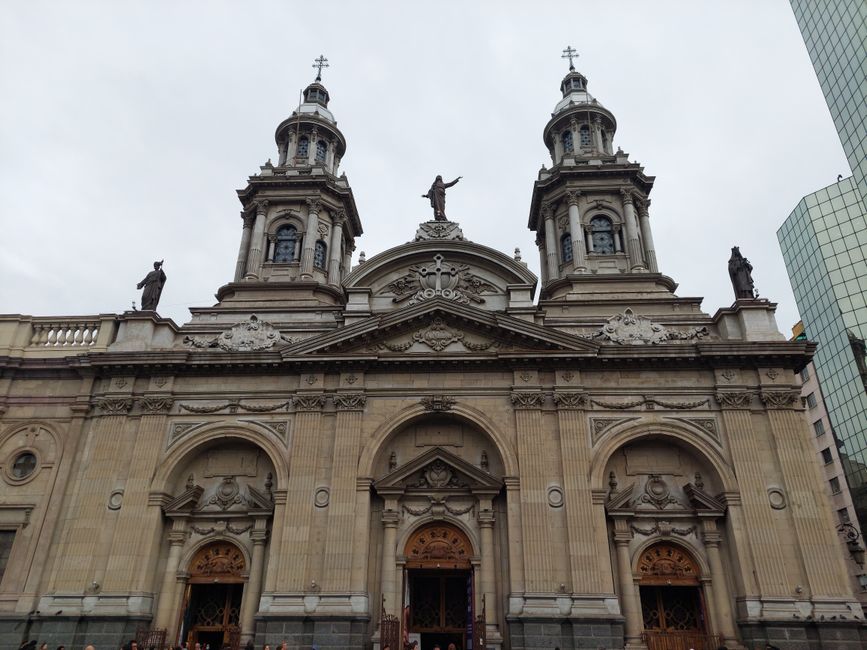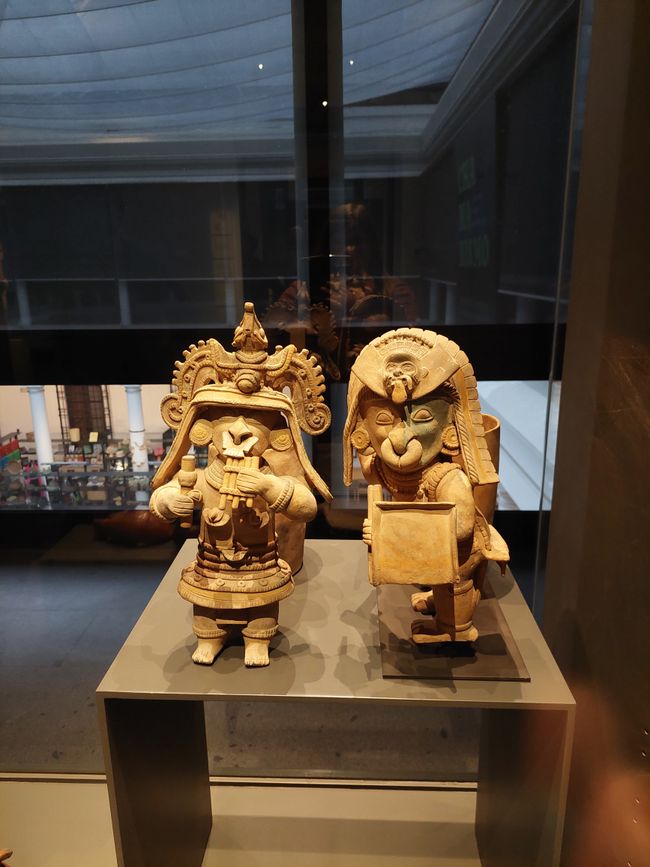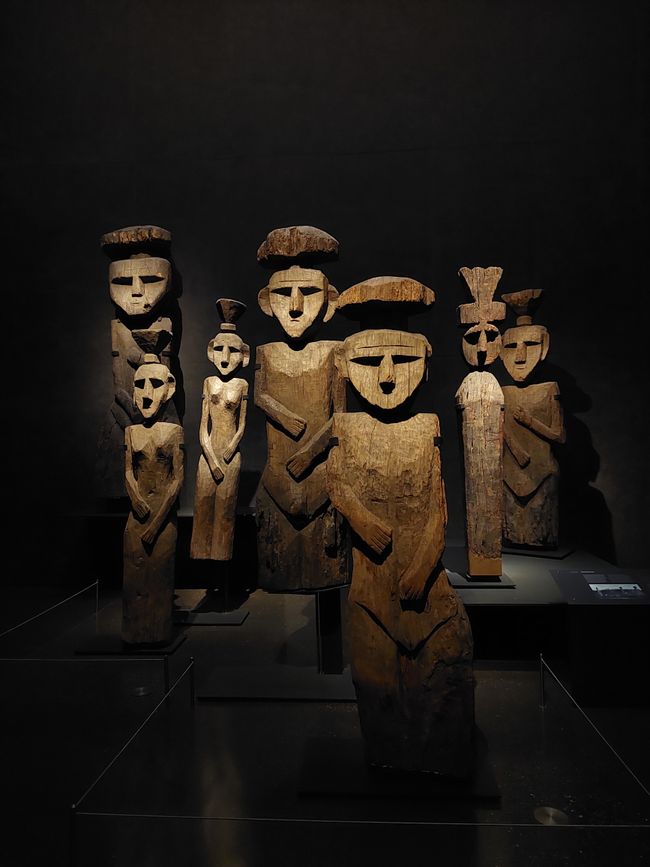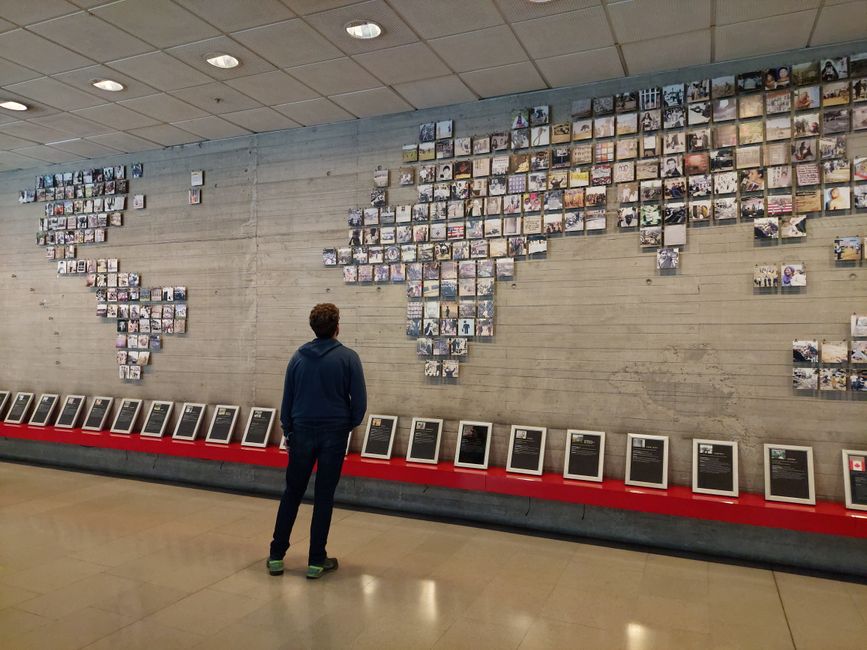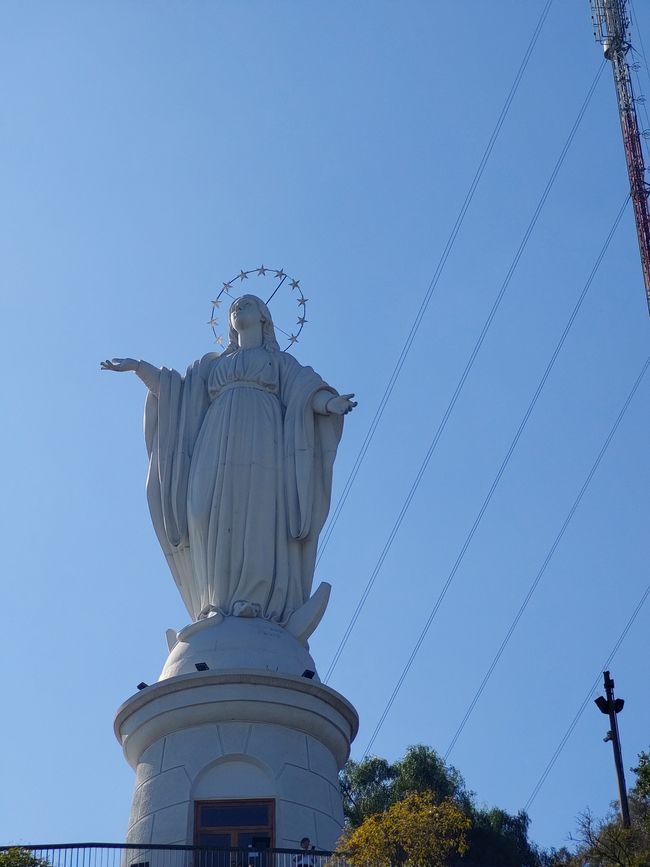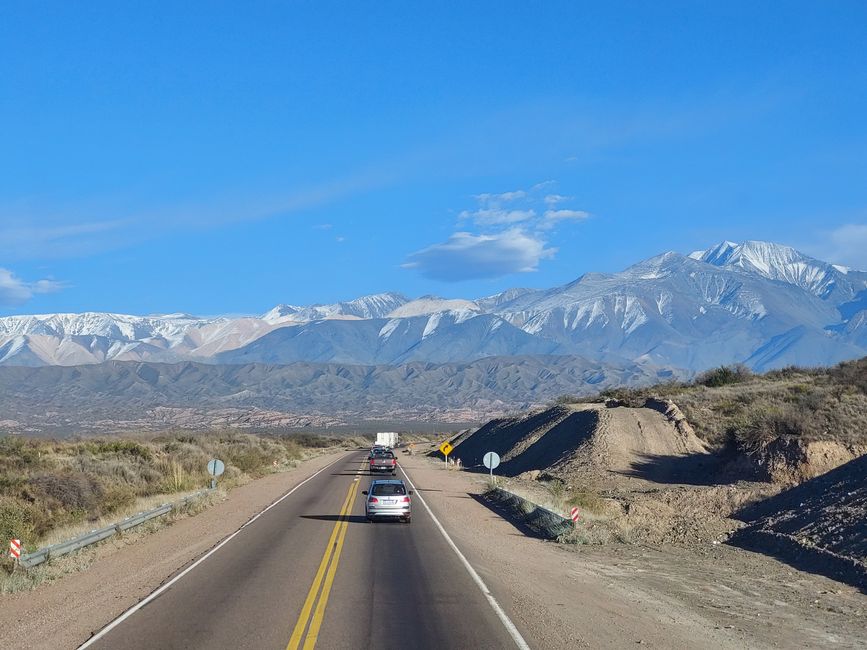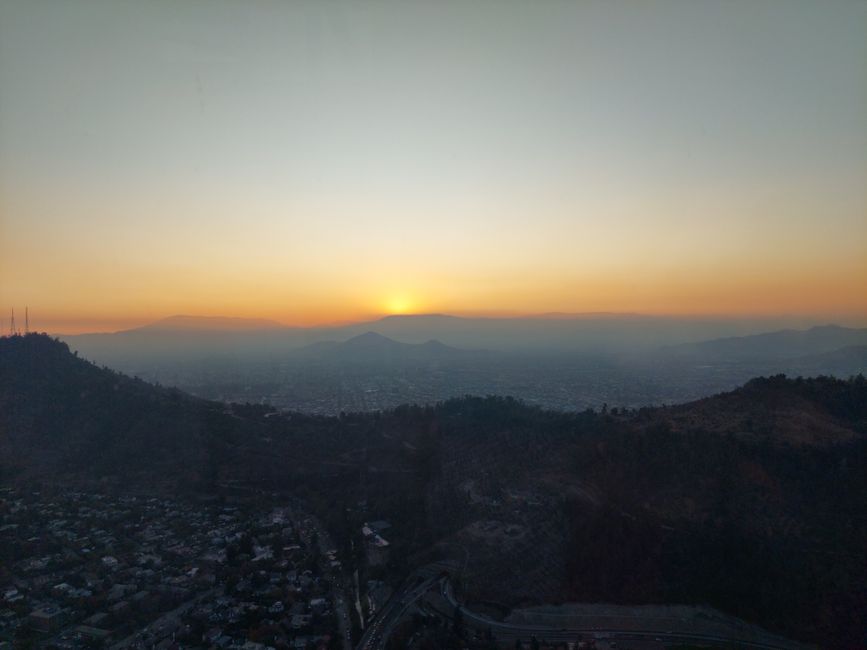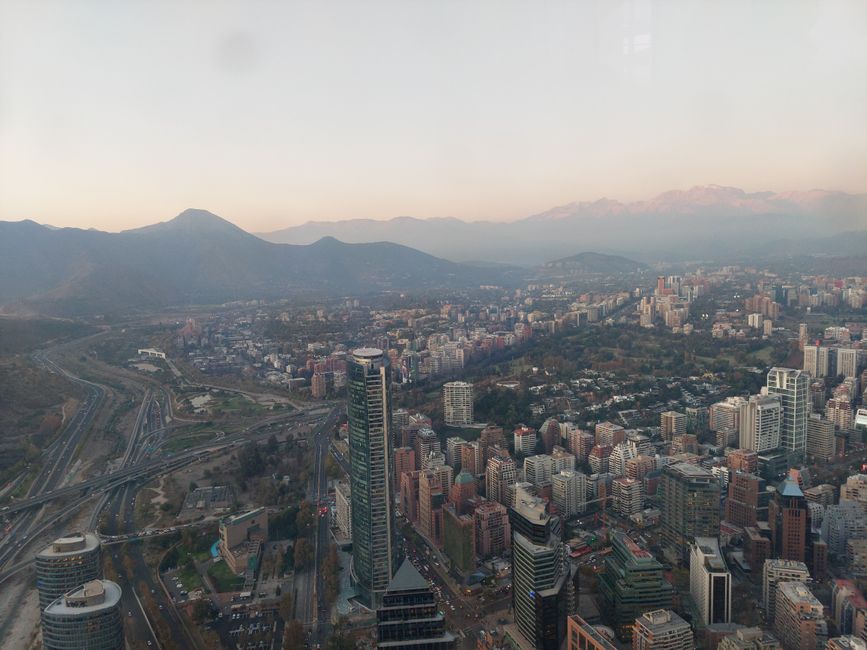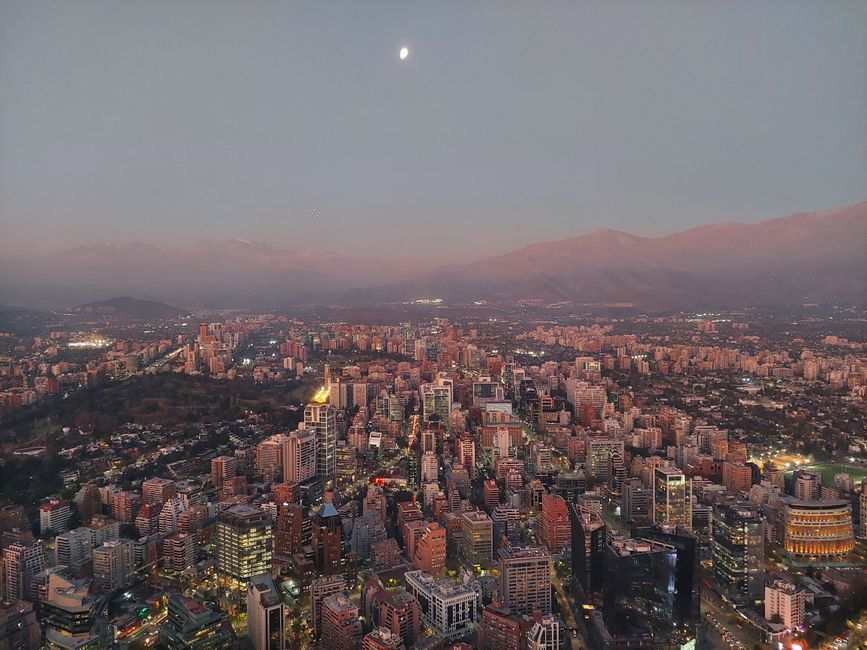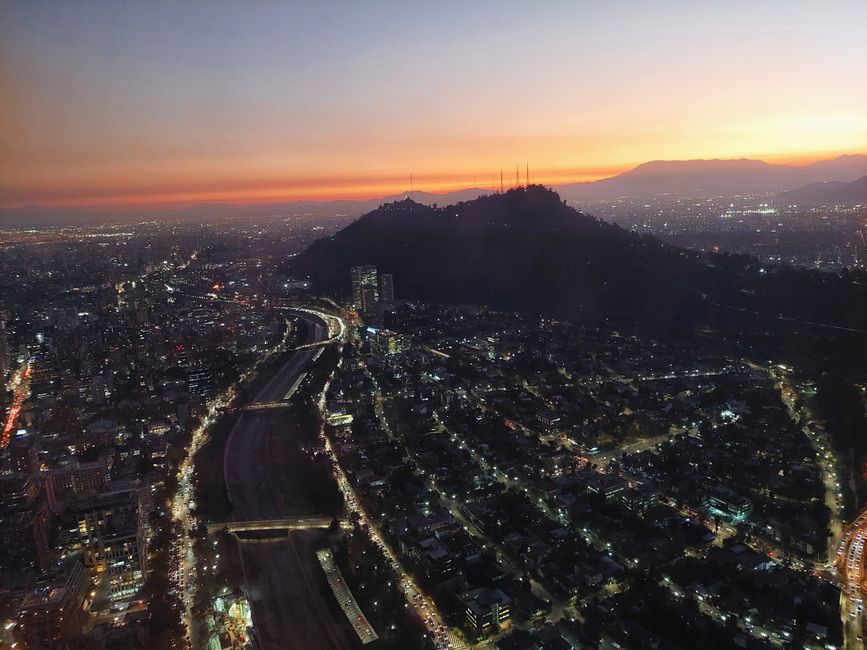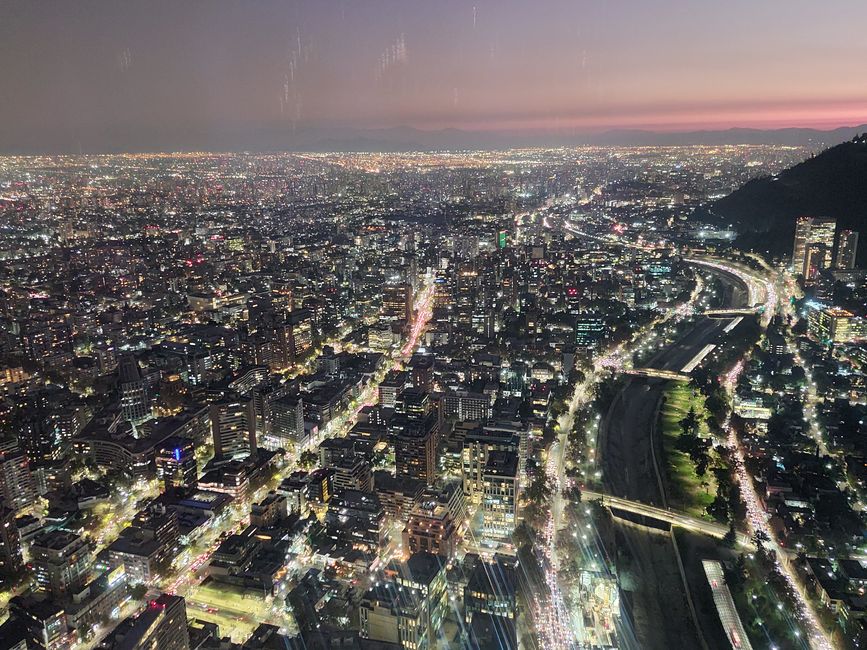Santiago de Chile
Wotae: 07.05.2023
Wɔ Nudɔdɔ na Nyadzɔdzɔgbalẽ
Our bus ride from Mendoza to Santiago de Chile took us back into the Andes. Judith's plan to reserve the (slightly more expensive) front seats on the upper level of the bus so that we could take many beautiful photos worked out. Before we started the journey, the bus drivers asked us for our entry stamp from Argentina or an email that we should have received as an alternative. During all our various entries into Argentina (from the airport, Uruguay, and Brazil), we didn't receive either of them, but we were still allowed to ride the bus. Instead of taking the steep gravel road up to the Cristo Redentor monument as before, we drove to Chile via the Los Libertadores Pass border crossing. Fortunately, the pass was open as there was no snow this time either. We had read before that sometimes you have to wait a long time in the cold up there during immigration, but we were able to wait in a not so cold room, and it didn't take that long.
Interestingly, we entered Chile directly without leaving Argentina first. Since we didn't have an entry stamp or an email anyway, that was fine with us. For the entry, we needed our vaccination passport for the first time, but not because of the numerous tropical vaccinations we had before our trip, but because of Covid. At the moment, this seems to be a bigger issue in these countries than in our own. We also saw several signs regarding mask requirements, social distancing, etc. in Argentina - but maybe they were outdated because hardly anyone followed them. We also didn't use our FFP2 masks that we brought along as a precaution; night bus rides would have been even more uncomfortable with them.
After crossing the border, we continued with the same bus on the other side of the Andes down a famous road with many switchbacks. Unlike our previous Andes tour a few days ago, this time it was a wide paved road, allowing both of us to enjoy the ride and the view of the road ahead. Later, we read that apparently the border crossing was closed for two days at 6 p.m. on the same day due to a bad weather front. So we were lucky that we could carry out our plans here.
Arriving in Santiago, we first needed money for a metro card. In Chile, we can finally withdraw cash normally from an ATM again. Or rather, we do it here because we didn't have cheaper alternatives in Argentina due to inflation there. However, everything is much more expensive here, or rather, the prices are actually at a European level. Public transportation is also not as cheap as on the other side of the Andes. And because of the relatively high fees for cash withdrawals, it is also worth estimating when and how often we will need to pay with cash instead of a card. The first cash withdrawal was a bit cumbersome because we had to find an ATM that had money first. But finally, we were able to take the metro to the slightly further away but safe area of our hotel, drop off our luggage there, and look for something to eat in peace.
We had heard various things about crime in Santiago. On the one hand, Chile is supposed to be a relatively safe travel destination, but on the other hand, other travelers who had been to Santiago told us that we have to be particularly careful with our valuables there. The free walking tour on our first day in the capital provided a little clarity: In recent years until today, the situation in the country has become more tense. Although after the protests in Chile in 2019, which we could also follow in the media, we soon heard nothing more about the situation in Chile. But then came the pandemic, and the original problems still seem to be unresolved. One goal of the protests was to change the neoliberal constitution, which essentially dates back to the military dictatorship under Pinochet that ended in 1990. According to the current state, a new constitution is supposed to be adopted sometime this year.
So at first, we had mixed feelings in this city because we didn't even know where we could take photos without worrying about our phones being stolen. Moreover, the weather was bad on the first day - a bad weather front in the Andes, as mentioned earlier, and rain in Santiago. But we thought the city deserved it because it was the first rain since October. Another point that our city guide had made us a little scared of at the beginning of the tour was the high risk of earthquakes due to its location on the Pacific Ring of Fire, which the Spanish conquerors knew nothing about when they built the city. The people here seem to have developed a relaxed approach to the topic. For example, one of the Chilean national drinks, which we still have to try, is called 'Terremoto' (earthquake), probably because you feel so shaken the day after drinking it. We found all of this a bit ambivalent but learned that the buildings here are now very earthquake-resistant. And we weren't robbed during our time in Santiago either.
After the city tour, we met up with Siu, whom Judith met at a summer school in Exeter and who lives in Santiago. Siu had suggested a restaurant in the area where our city tour was supposed to end, and we actually arrived at the right place at the right time. We both enjoyed the meeting very much. Siu recommended delicious Chilean food and her favorite wine from Chile (Carménère), which we both liked. After the meeting, we walked tipsy through the Museo de Arte Precolumbino (Museum of Precolumbian Art) with (art) objects from South American indigenous peoples, trying to focus on the exhibits from present-day Chile because we want to visit some of the other countries later.
According to our city guide, the weather on the next day was supposed to be very nice again, and according to Siu, it was going to rain again. Siu was right, so we postponed our plans to visit viewpoints for now. Instead, we visited another museum: the Museo de la memoria y los derechos humanos (Museum of Memory and Human Rights). It covered Pinochet's military dictatorship from its beginning to its surprisingly democratic end and, above all, the human rights violations committed during that time. Unfortunately, the order in the English audio guide didn't always correspond to the exhibition, so we sometimes had to improvise. Otherwise, the content of this museum was relatively intense, but in the end, we had an earworm from the campaign commercial of the president elected after the dictatorship, Aylwin (Gana la gente - The people win (from 1:12)).
Our third day in Santiago was May 1st, which is also celebrated here as Labor Day, to a special extent: there is a work ban on this day for all employed people. There were also demonstrations again, so we took the opportunity to take a break at the hotel, even though the weather was now better. However, Siu still wanted to invite us to dinner in the evening, originally at her place. Therefore, the day before, we already searched for gifts for her and bought a pack of Ritter Sport chocolate and Edle Tropfen in Nuss (finest liqueur-filled chocolates) in a huge supermarket in the international section to introduce her to our culinary world a bit. We also found a bottle of Chilean wine of her favorite grape variety, Carménère, and bought it. However, it turned out that Siu had found a restaurant very close to our hotel that was also open on May 1st (either the restaurant is family-run or it's illegal) and invited us there. So since we weren't at her place after all, we left the wine bottle at the hotel and only brought the sweets. The evening was again very nice, and we had the best pizza of our trip so far. Siu insisted on paying for us again and also gave us a bottle of her favorite wine, Carménère, as a gift. At the end of the day, we went back to the hotel satisfied and started thinking about which evenings we would empty our two bottles of Carménère wine.
On our last full day in Santiago, we wanted to make up for our postponed plans to visit viewpoints. First, we wanted to go up to the San Cristobal Hill, which is located in the middle of the city and has a large park. There is a funicular and a cable car to the summit, and we were looking forward to going up with one and coming down with the other. Unfortunately, both were out of service on that day due to maintenance work, so we had to take the bus up to enjoy the view and see a statue of the Virgin Mary. Although we thought that there would have been more opportunities to walk around on the summit, there was not much else to see there, and since the cable cars weren't running anyway, we walked back down on foot. On the way down, we also had various different views of the city. As on the previous day, the weather was very nice this time. The visibility wasn't great, but that was probably due to the smog that Santiago regularly sinks into. Our second viewpoint was the Torre Costanera, the tallest building in South America. Although this tower is very close to the hill and about the same height, we got to see different views here again, also because we could now witness the sunset. Afterwards, we bought a Chilean prepaid SIM card in the adjacent shopping center. So far, we had managed without mobile data and simply enjoyed every open Wi-Fi that we came across. However, Siu had given us the tip that the safest way to get around in a city here is actually to use Uber. We have no experience with Uber yet; it is also prohibited in Germany (it is also prohibited in Chile, but nobody follows that rule), but we now want to give it a try. Since you can only get an Uber car if you have an internet connection until the pickup, we have now bought a SIM card, which was not expensive at all. Sebastian is now always available, which has advantages and disadvantages. In the evening, we opened one of the two bottles of wine so that we only had to carry one with us to the next destination.
That's how our last day in Santiago ended, and the next day we were only busy checking out and getting to the bus station. Santiago didn't become our favorite city, but we still found some interesting areas and experienced nice things. We still don't speak the language perfectly here: In Argentina, we were still optimistic for the other countries when we read that Argentine Spanish supposedly differs the most from European Spanish. Until the first people then told us that the understanding in Chile was still worse. For example, Sebastian, a fan of automatic announcements in public transportation since forever, could only find out what the sentence 'seinsiei cierre do puertas' in the Santiago metro before the doors close was made up of with the help of Google (solution: se inicie el cierre de puertas = the closing of the doors is initiated). But fortunately, there are always people here who speak slower and clearer (instead of switching to English right away).
Wɔ Nudɔdɔ na Nyadzɔdzɔgbalẽ
Ŋuɖoɖo
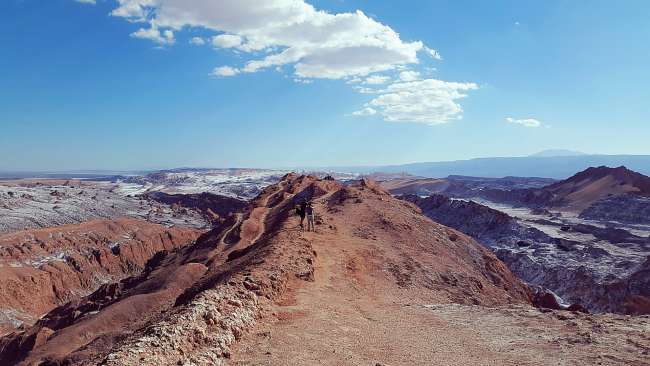
Mɔzɔzɔ ŋuti nyatakakawo Chile
